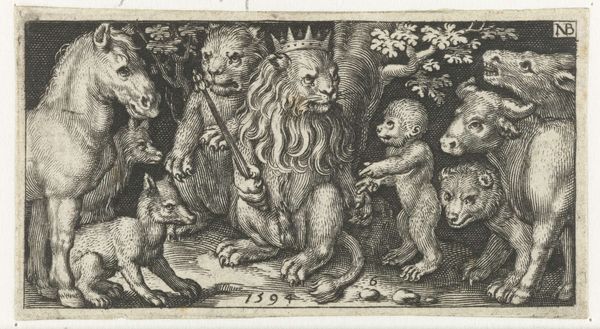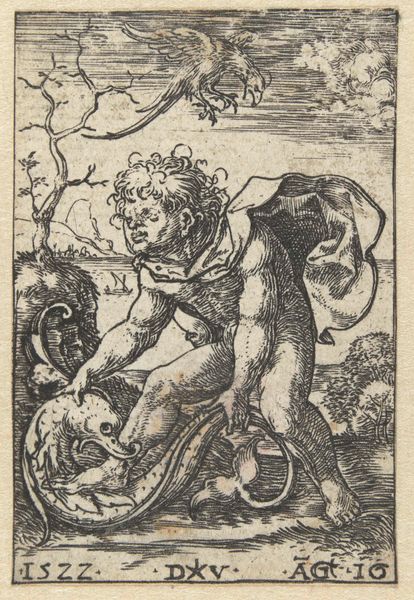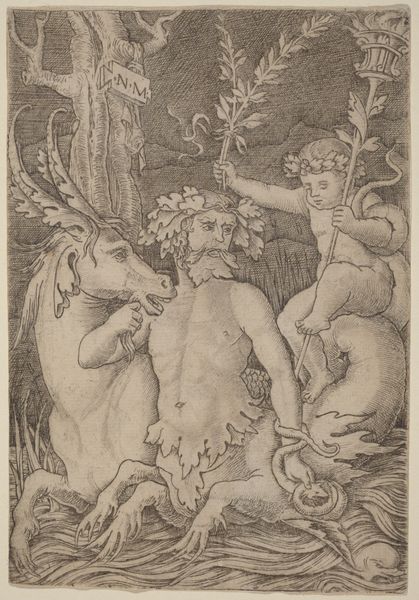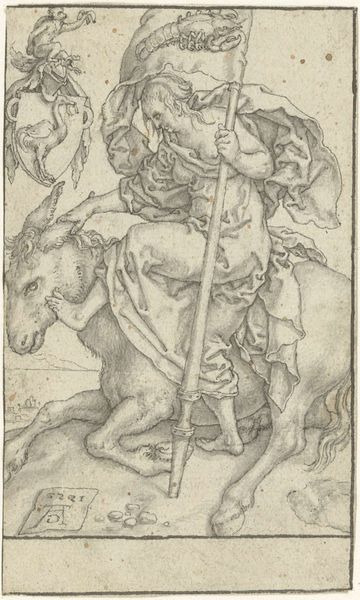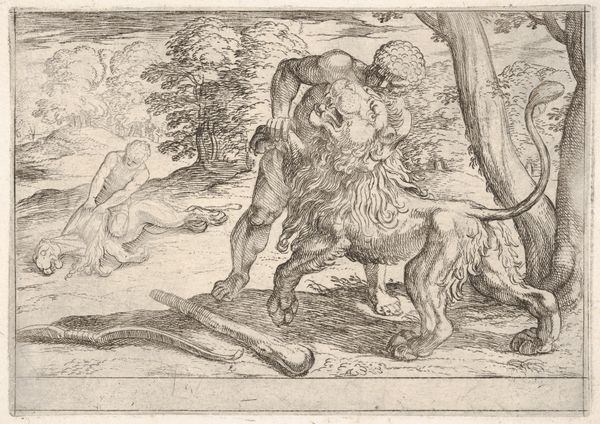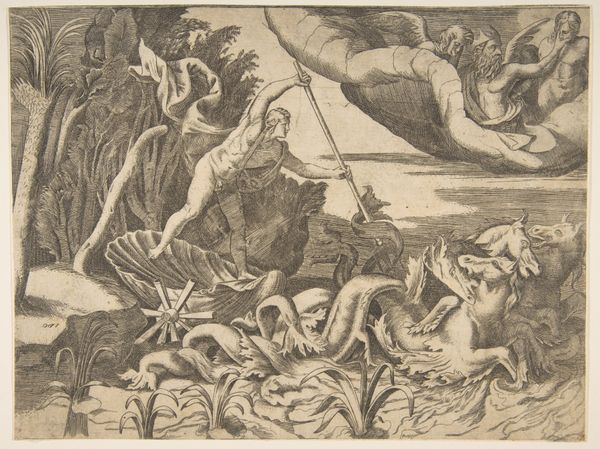
print, engraving
#
baroque
# print
#
landscape
#
figuration
#
genre-painting
#
engraving
Dimensions: height 35 mm, width 63 mm
Copyright: Rijks Museum: Open Domain
Curator: This engraving, titled *Orpheus betovert de dieren met zijn muziek*—"Orpheus Charming the Animals with his Music"—was crafted in 1594 by Nicolaes de Bruyn. Note the incredible detail, characteristic of the baroque style. Editor: It strikes me immediately as almost claustrophobic, a menagerie crammed into a very shallow space. The rendering of the animals, though, is meticulous; they’re more like carefully cataloged specimens than figures in a vibrant scene. Curator: Yes, the composition is intentionally compact. Bruyn’s intent seems to be less about spatial illusion and more about a symbolic representation of Orpheus's power. Look at the expressions; even the lion appears transfixed. Editor: Precisely! Power isn’t just individual prowess; here, it is a symbol for maintaining social order through artistic expression. Remember that, during this era, genre painting was a tool, often displayed prominently in public places to reinforce specific behaviors within the populace. This is a reminder to the city of their moral behaviors. Curator: Indeed. There's a fascinating contrast at play here between the chaotic assortment of animals and the composed figure of Orpheus. It all speaks to music’s capacity to bring order from discord. Editor: Considering its cultural moment, it really seems to me a visualization of the civilizing influence of art on the natural, often savage, world. The engraving could very easily act as propaganda for art’s power to educate and even improve citizens. Curator: And that message is reinforced through technique; the use of precise, controlled lines emphasizes control itself, doesn’t it? The medium amplifies the message, linking the physical control of engraving to the thematic idea. Editor: What resonates is the way Bruyn has mobilized a classical myth, and genre aesthetic within a cultural framework where civic virtue and artistic patronage are intertwined. It invites the public to consider their own place within that dynamic. Curator: The way the material itself is etched also makes you think about permanence—engraved lines that carve directly into the physical object ensure the scene lives on through centuries. I will continue to keep the themes of power and artistry intertwined as I think more on this print. Editor: I'm taking away a new, reinvigorated appreciation of the cultural functions art can fulfill for both governments and the public—the artist both reflecting and shaping society’s behaviors and principles.
Comments
No comments
Be the first to comment and join the conversation on the ultimate creative platform.



